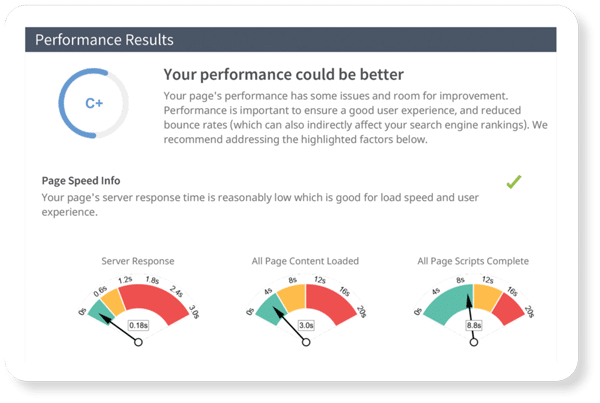Google Presents: Critical Insights on How Patients Search for Doctors
At MyAdvice, we’ve been building medical websites and optimizing them for organic search for over two decades. But what good is a visitor to your site who never becomes a patient?
Here are various ways we help turn your site visitors into future patients. Or, if we haven’t built your site, these are areas your site may be lacking, and they could be behind your lack of conversions.
1) Make it obvious that you’re the expert they need.
Whether you’re an orthopedic surgeon, a dentist, a plastic surgeon, a dermatologist, or any other specialty, there’s one thing your patients come to you for — they view you as an expert and they trust you to perform the procedure they need.
Is your site getting that across to potential patients? No matter your specialty, you’re not unique. There are other practices offering the same procedures in your area. So you need to position yourself as the obvious choice for the procedure. You can do this on your “About Us” page, detailing your background and why you’re in this specialty, not just listing your college training and other personality-less items.
You can be seen as the expert by providing rich, detailed content describing your procedures. This should include well-written, extensive copy; photos; and animations and videos where appropriate. Having a two-paragraph description of dental bone grafting, including a few grammatical errors, probably won’t convince many people you’re the expert they should trust with the procedure.
2) Make the site work for the visitor.
There are reasons our designers build in features such as an ever-present mini menu with contact info that stays at the top of every page when our client sites are viewed on mobile devices. On desktop, we assume a user scrolling downward is viewing content, but when he or she moves back upward we instantly display an overlay contact info/menu bar at the top of the page.
Why do we do these things? Because it has to be easy for the visitor to take the next step in the process — to call, find other items in your menu, or fill out a contact form. If it is difficult to find what they want, the visitor/potential patient will move on, never to be converted to an actual patient.
3) Your site has to be seen for a visitor to be converted.
This may seem obvious, but if your potential visitor can’t find your site you’re not going to convert the person into a patient. Simply having a website may seem like enough. You may have hired a local digital design firm or even a freelancer to build your site. But the problem is, that firm or designer isn’t well versed in search engine optimization. Your site is beautiful, but it exists in the netherworld because it doesn’t rank in search.
Your site’s framework has to be friendly for Google to understand it. Your site needs to load in the correct order and quickly. Your site needs to be mobile friendly. It has to have accurate titles, proper meta tags, and relevant keywords. Even consistency in your practice name, address, and phone across various listings and on your practice Facebook page is crucial for search ranking.
The point is, having a beautiful website means nothing if no one is seeing it. It has to be optimized for search.
4) Keep updating your content.
When Google’s bots search your website, they are looking for well-written, informative copy that helps them understand what you are providing. It then matches the searcher’s query with the best options to make the searcher happy with the returned search results. Google wants satisfied searchers.
To let Google know you’re the answer to the particular search your content needs to be up-to-date, informative, and engaging. If new techniques are changing a procedure, your content needs to reflect that. This will earn your site elevated ranking in organic search, and that will bring more visitors to your site. From there, your detailed, engaging content can convert them to patients.
5) Utilize social media to convince visitors to become patients.
While we all have different opinions about social media and its effect on areas of our lives, the fact is social media, particularly Facebook, can give your practice a human side that is different from your practice website.
If a potential patient has found your site and is engaged enough to click the link to your practice Facebook page, he or she is ready to make an appointment for a consultation. Your Facebook page — complete with a video of you showing the new laser you just added to your practice, pictures of your office manager’s son’s graduation, posts touting this month’s specials, etc. — can give your practice a personal touch that closes the potential patient. Now they’re comfortable enough to make contact and book an appointment.
...
These are just a few of the strategies we employ at MyAdvice on behalf of our clients’ practice websites to garner more new patients. There’s more to getting a site visitor to move on to become a patient than you may think. After all, you’re busy running your practice. But we think about converting visitors to patients every day.
We can help you improve your practice website conversion rate and grow your new patient list. Let’s talk.


